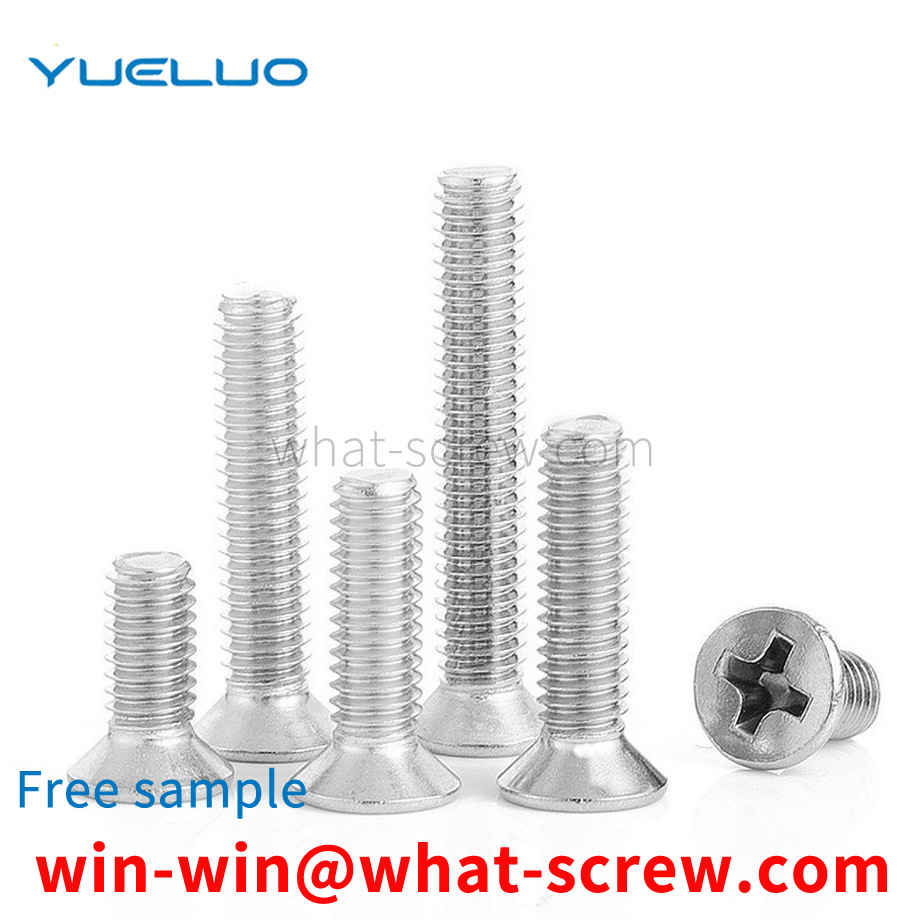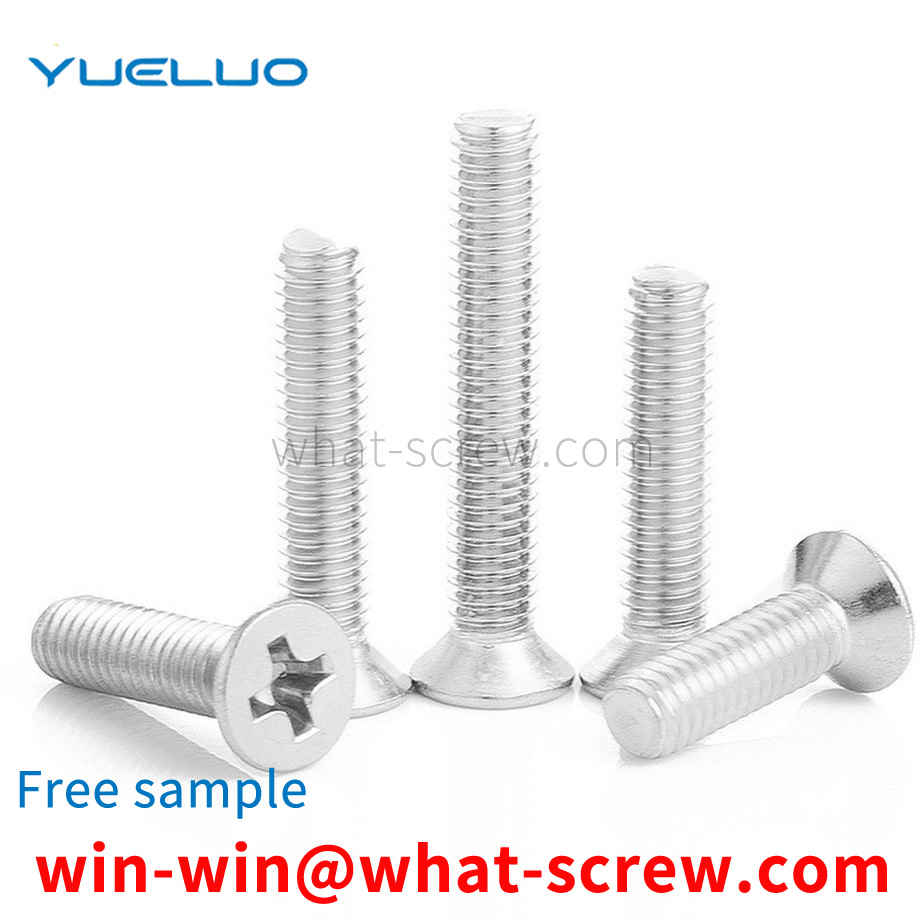Inspection method There are two types of screw surface inspection, one is the inspection before the screw is produced and not plated, and the other is the inspection after the screw is plated, that is to say, after the screw is hardened and the surface of the screw is treated. . After the screws are produced and before electroplating, we inspect the screws in various aspects such as size and tolerance. See if there are national standards or customer requirements. After the surface treatment of the screws, we will inspect the plated screws, mainly to check the color of the plating and whether there are any broken screws. In this way, when we deliver screw goods to customers, customers can successfully pass the customs when they receive the goods. Inspection of screws after treatment: 1. Appearance quality requirements The inspection of the appearance of screws is carried out from the aspects of appearance, electroplating layer and so on. Second, the inspection of the thickness of the screw coating 1. The measuring tool method uses a micrometer, a vernier caliper, a plug gauge, etc. 2. Magnetic method The magnetic method is used to measure the thickness of the coating layer, which is a non-destructive measurement of the non-magnetic coating layer on the magnetic substrate with a magnetic thickness gauge. 3. Microscopy Microscopy is called metallographic method, which is to magnify the etched fasteners on a metallographic microscope with a micrometer eyepiece to measure the thickness of the coating on the section. 4. Timing flow method The timing flow method uses a solution that can dissolve the coating to flow on the local surface of the coating, and calculates the thickness of the coating according to the time required for the local coating to dissolve. There are also coating drop method, anodic dissolution Coulomb method, etc. 3. Inspection of the adhesion strength of the screw coating There are many methods for evaluating the adhesion between the coating and the base metal, usually the following. 1. Friction polishing test; 2. File method test; 3. Scratch method; 4. Bending test; 5. Thermal shock test; 6. Extrusion method. 4. Inspection of corrosion resistance of screw coatings The corrosion resistance inspection methods of coatings include: atmospheric exposure test; neutral salt spray test (NSS test); acetate salt spray test (ASS test), copper accelerated acetate salt spray test (CASS) test); and corrosion paste corrosion test (CORR test) and solution spot corrosion test; immersion test, inter-dipping corrosion test, etc.
The nuts of some products must be installed on the outside, but due to the small internal space, when the indenter of the riveting machine cannot meet the strength requirements by methods such as riveting and budding, riveting and riveting are impossible. Rivets to be nailed. Applicable to the fixed field of each thickness plate and tube (0.5MM-6MM). Using pneumatic or manual riveting equipment, rivet once and it is easy to secure. Replacement of the existing welding nut to supplement the metal plate, the thin tube welding is easy to melt, and the welding nut is not smooth.
Now people often use spring washers to lock nuts and bolts, spring washers, generally stainless steel and carbon steel non-closed spiral washers, under the nut, above the flat washer, increase the friction between the nut and the bolt, used to prevent The loosening of the nut plays a role in preventing vibration and loosening, but it is often due to a radial external tension, which is caused by the tightening axial force generated by the tightening torque, and the phenomenon of open ring expansion occurs, and the hydrogen embrittlement of the spring washer often occurs. The pressure is unevenly applied to the flat washer through the spring washer, and the friction coefficient between the spring washer and the nut and the flat washer is small, resulting in vibration, rotation and relaxation.
Countersunk head screws are mostly used after installation, and the surface of the parts cannot be raised, and the parts to be fastened have two thicknesses. Thickness, after the screw is tightened, there is still a part of the screw thread that does not enter the threaded hole. In this case, the countersunk head screw can definitely be tightened. There is usually a situation where the thickness of the fastened part is less than the height of the head of the countersunk head screw, which is commonly seen in sheet metal parts in mechanical equipment, such as the connection between the hinge of the chassis and the door and the box; the sheet metal of the equipment The connection of the cover to the equipment, etc. Due to the small thickness of the part, the tightened sheet metal part, the screw through hole completely becomes a conical hole, in this case, when the countersunk head screw is tightened, the screw head is not a tapered surface to press the sheet metal part , but the bottom of the screw head and the top of the threaded hole are squeezed. Although it feels that the screw is tightened, the sheet metal part is stuck instead of being pressed. In this case, although it feels that the screw is tightened, the sheet metal The gold pieces were indeed not tightened. This is a very common situation. Let’s talk about the reasons for the processing: the head cone of the countersunk screw has a 90° conical angle, and the apex angle of the newly bought drill is usually 118°-120°. Some workers who lack training do not know this angle is poor. It is often used to ream the hole with a 120° drill bit, which results in that when the countersunk head screw is tightened, it is not the conical surface of the head, but a line at the bottom of the screw head, which is one of the reasons why the so-called countersunk head screw cannot be tightened. , it's not the screw's fault.
Two-combination screw refers to a screw and a flat washer, or a spring washer, or a square washer, or a two-piece combination with an external tooth lock washer. Then there are all the standard types of two combination screws! The following is a brief introduction: 1. The second combination screw with spring washer refers to the combination screw with a spring washer. The spring washer is a spring washer specially used for combination screws, not the ordinary spring washer that we usually use. 2. The two-combination screw of the trim pad refers to the combination screw of the screw with a flat pad. The size of the flat pad and the thickness of the flat pad can be customized. Can be customized according to customer requirements. Flat pads are punched out by punching machines. 3. The combination screw with two external teeth refers to the screw with an external tooth combination screw. Many customers, especially electric power customers, use this external tooth two combination screw to break the paint and make the screws on the iron plate. All can be powered on. 4. Two combination screws with a square pad refer to a square pad with a square pressure line for the screw. This square pad crimping two combination screw is used on the terminal, and the function is used for crimping and wiring.
We have many years of experience in the production and sales of screws, nuts, flat washers, etc. The main products are: plastic cross recessed bolts, wear-resistant insulation, self-locking non-slip nuts, support spacers and other products, we can provide you with suitable fasteners for you solution.



















 Service Hotline
Service Hotline




